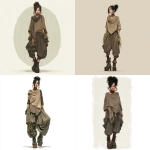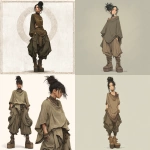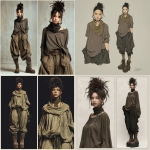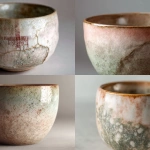Explore the Best AI Image Gallery

Beyond the Canvas: Wearable Tech as a New Creative Frontier
The realm of creativity has always been driven by innovation, with artists constantly seeking new tools and mediums to express their vision. Today, wearable technology stands at the forefront of this evolution, offering a paradigm shift in how we create, interact with art, and experience the world around us.
Reimagining Artistic Expression
Wearable tech is transforming artistic expression by empowering creators with unprecedented control over their work. Imagine painting with your gestures, sculpting with your thoughts, or composing music through your movements. Devices like haptic gloves, brain-computer interfaces, and augmented reality glasses allow artists to translate their inner world into tangible creations in real time.
This technology is not limited to traditional art forms. Wearable tech is also impacting fields like fashion, design, and performance art. Fashion designers can use sensors embedded in clothing to create interactive garments that respond to the wearers body language or environment. Architects can visualize their designs in 3D through augmented reality overlays, while dancers can incorporate wearable LEDs and sensors into their costumes to enhance their movements and tell compelling stories.
Expanding Creative Collaboration
Wearable tech fosters a new era of collaborative creativity. Imagine artists working together in virtual spaces, sharing ideas and manipulating digital objects in real time through their wearables. This technology transcends geographical boundaries, allowing creators from around the world to collaborate on projects regardless of their location.
Furthermore, wearable tech can bridge the gap between artists and audiences. Interactive installations powered by sensors and haptic feedback allow viewers to actively participate in the artwork, shaping its narrative and leaving a lasting impact. This immersive experience fosters deeper engagement and understanding between creators and their audience.
Navigating Ethical Considerations
While the potential of wearable tech for creativity is immense, it also raises important ethical considerations that must be carefully addressed. Data privacy is paramount, as wearables collect vast amounts of personal information about users movements, emotions, and interactions. Its crucial to establish transparent data governance practices and ensure user consent for data collection and usage.
Another concern is the potential for bias in algorithms used by wearable tech. If these algorithms are not carefully designed and tested, they could perpetuate existing societal biases, leading to unfair or discriminatory outcomes.
Furthermore, the increasing integration of AI into wearable tech raises questions about authorship and creativity. As machines become capable of generating art autonomously, its important to define the role of human creativity and ensure that technology empowers rather than replaces human expression.
Future Trends in Wearable Tech for Creativity
The future of wearable tech for creativity is brimming with possibilities. We can expect to see:
- More sophisticated haptic feedback systems that allow for nuanced and immersive creative experiences.
- Advanced brain-computer interfaces that enable users to control digital creations with their thoughts.
- Seamless integration of wearable tech into existing creative workflows, such as 3D modeling, music production, and video editing.
- The emergence of new artistic mediums and forms of expression enabled by the unique capabilities of wearables.
Wearable technology is not just about gadgets; its about empowering individuals to explore their creative potential in unprecedented ways. As this technology continues to evolve, we can expect to witness a surge of innovation, pushing the boundaries of art and creativity far beyond our imagination.















](https://images.ai-img.art/thumbnails/150/42d2d357bc68a8f707abfc29c35e7c9b5388d6559e4e2b94ba648cf0cf734bb1.webp)






](https://images.ai-img.art/thumbnails/150/a386b7328d9a450c8a0cafbdad5815eeb35b0177d0e8fa85f97cbaa5fee75954.webp)












](https://images.ai-img.art/thumbnails/150/ec0cb0bee85af7229e33a02acb89441c1cf702d21b383b244148fbc0d36b85dc.webp)




](https://images.ai-img.art/thumbnails/150/21e921e68d4754d45ff17adc76eeaabe152c41a580321a7ec899dcfdf935afca.webp)








